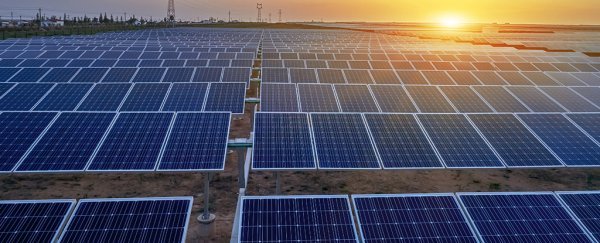After 40 Years of Searching, Scientists Identify The Key Flaw in Solar Panel Efficiency
Hello friends my self @ranveers again came on bakwas news.Solar panels are fantastic pieces of technology, but we need to work out how to make them even more efficient – and scientists just solved a 40-year-old mystery around one of the key obstacles to increased efficiency. new study outlines a material defect in silicon used to produce solar cells that has previously gone undetected. It could be responsible for the 2 percent efficiency drop that solar cells can see in the first hours of use: Light Induced Degradation (LID).
new study outlines a material defect in silicon used to produce solar cells that has previously gone undetected. It could be responsible for the 2 percent efficiency drop that solar cells can see in the first hours of use: Light Induced Degradation (LID).
Multiplied by the increasing number of panels installed at solar farms around the world, that drop equals a significant cost in gigawatts that non-renewable energy sources have to make up for.fact, the estimated loss in efficiency worldwide from LID is estimated to equate to more energy than can be generated by the UK's 15 nuclear power plants. The new discovery could help scientists make up some of that shortfall.
"Because of the environmental and financial impact solar panel 'efficiency degradation' has been the topic of much scientific and engineering interest in the last four decades," says one of the researchers, Tony Peaker from the University of Manchester in the UK.However, despite some of the best minds in the business working on it, the problem has steadfastly resisted resolution until now."To find what 270 research papers across four decades had previously been unable to determine, the latest study used an electrical and optical technique called deep-level transient spectroscopy (DLTS) to find weaknesses in the silicon.
Here's what the DLTS analysis found: As the electronic charge in the solar cells gets transformed into sunlight, the flow of electrons gets trapped; in turn, that reduces the level of electrical power that can be produced.
This defect lies dormant until the solar panel gets heated, the team found.We've proved the defect exists, its now an engineering fix that is needed," says one of the researchers, Iain Crowe from the University of Manchester.
The researchers also found that higher quality silicon had charge carriers (electrons which carry the photon energy) with a longer 'lifetime', which backs up the idea that these traps are linked to the efficiency degradation.
What's more, heating the material in the dark, a process often used to remove traps from silicon, seems to reverse the degradation.
The work to push solar panel efficiency rates higher continues, with breakthroughs continuing to happen in the lab, and nature offering up plenty of efficiency tips as well. Now that the Light Induced Degradation mystery has been solved, solar farms across the globe should benefit.An absolute drop of 2 percent in efficiency may not seem like a big deal, but when you consider that these solar panels are now responsible for delivering a large and exponentially growing fraction of the world's total energy needs, it's a significant loss of electricity generating capacity," says Peaker.
The research has been published in the Journal of Applied Physics
Congratulations @ranveers! You have completed the following achievement on the Steem blockchain and have been rewarded with new badge(s) :
You can view your badges on your Steem Board and compare to others on the Steem Ranking
If you no longer want to receive notifications, reply to this comment with the word
STOPVote for @Steemitboard as a witness to get one more award and increased upvotes!
Hi! I am a robot. I just upvoted you! I found similar content that readers might be interested in:
https://www.sciencealert.com/scientists-identify-a-key-flaw-in-solar-panel-efficiency-after-40-years-of-searching